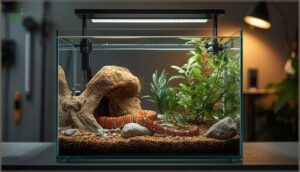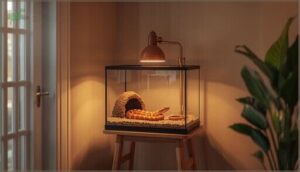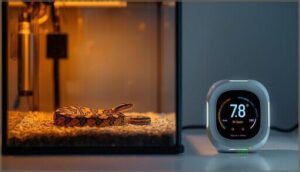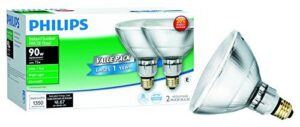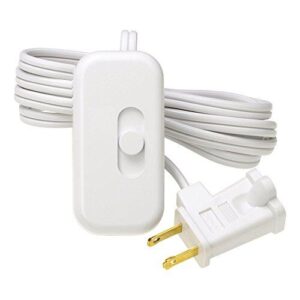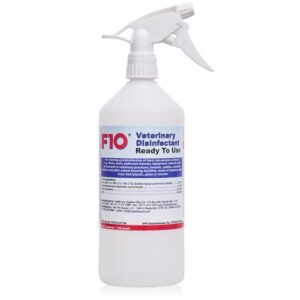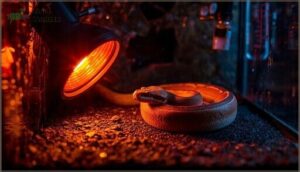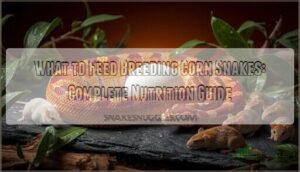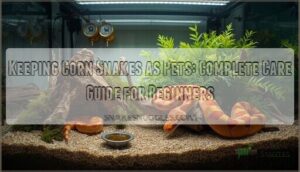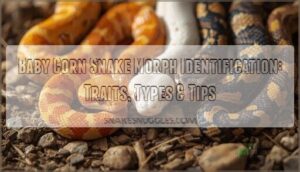This site is supported by our readers. We may earn a commission, at no cost to you, if you purchase through links.

Your baby corn snake’s survival hinges on one critical factor: consistent warmth. Unlike mammals, these delicate hatchlings can’t generate their own body heat, which means they depend entirely on you to maintain a precise thermal environment.
Get the temperature wrong—even by a few degrees—and you’re looking at digestive problems, weakened immunity, or worse. The challenge isn’t just providing heat; it’s creating a proper gradient while avoiding dangerous hot spots that can burn tender scales.
Your snake needs specific equipment, careful monitoring, and a setup that mimics the natural temperature variations it would experience in the wild.
Table Of Contents
- Key Takeaways
- Setting Up a Warm Enclosure for Baby Corn Snakes
- Heating Methods for Baby Corn Snake Tanks
- Monitoring and Maintaining Ideal Temperatures
- Humidity Control and Moist Hides
- Substrate and Decorations for Thermal Regulation
- Top 8 Products to Keep Baby Corn Snakes Warm
- 1. Reptile Uvb Lighting Solution Lamp
- 2. Reptile Uv Light Meter Tool
- 3. Dimmable Halogen Flood Light Bulbs
- 4. Lutron Plug In Lamp Dimmer
- 5. Herpstat Digital Temperature Controller Plus
- 6. Smart Temperature Control Thermostat
- 7. Pet Friendly Disinfectant Cleaner Spray
- 8. Corn Snakes Comprehensive Owner’s Guide
- Common Mistakes in Heating Baby Corn Snakes
- Frequently Asked Questions (FAQs)
- Conclusion
Key Takeaways
- Baby corn snakes require a precise thermal gradient of 85-90°F on the warm side and 70-75°F on the cool side, maintained 24/7 with thermostat-controlled heat mats or overhead heating to support digestion, immune function, and natural thermoregulation.
- Never use heat rocks, which cause 78% of reptile burn injuries, and always pair any heat source with a calibrated digital thermometer and thermostat to prevent fatal overheating or dangerous temperature drops below 75°F.
- Proper enclosure setup includes multiple hides at different temperature zones, 65-75% humidity with a moist hide for shedding, and substrate depth of at least 3 inches for thermal insulation and burrowing behavior.
- Temperature monitoring requires dual digital probes at both warm and cool ends, regular calibration checks, and backup heating plans for power outages since enclosures lose critical warmth within 3-5 hours without intervention.
Setting Up a Warm Enclosure for Baby Corn Snakes
Your baby corn snake needs the right foundation to stay warm and healthy. A proper enclosure isn’t just about the tank itself—you’ll need to think about size, location, and security to create a safe environment.
Here’s what you need to think about when setting up your snake’s home.
Choosing The Right Tank Size
Start your baby corn snake in a 10-gallon tank—it’s the sweet spot for hatchlings. This size lets you establish a reliable thermal gradient while preventing your snake from feeling overwhelmed. As growth considerations dictate, you’ll upgrade to a 20-gallon tank within 6–9 months, then eventually to a 40-gallon snake enclosure.
Adequate enclosure space encourages essential behaviors. Proper habitat size fosters healthy development and makes escape prevention manageable with secure lids.
Placement for Minimal Disturbance
Once you’ve selected the right tank, find a quiet location away from heavy foot traffic and noise. A stable environment reduces stress by up to 32% and encourages natural behaviors like basking and exploring.
Position your baby corn snake’s enclosure away from windows, doors, and heating vents—these areas create temperature swings that disrupt your heating pad and thermometer readings. This placement directly improves health outcomes and aids proper thermal regulation with your heat mats and temperature gradient.
Corn snakes are docile constrictor animals and are generally safe to handle.
Secure Openings to Prevent Escape
Beyond placement, you need to address enclosure security. Baby corn snakes compress their bodies to about 30% thickness and squeeze through openings larger than 5 mm.
Install locking mechanisms on sliding doors and use at least four lid clamps on glass tanks. Seal gaps with aquarium caulk or felt strips.
These physical barriers reduce escape risks by 90% while maintaining consistent temperatures inside your snake enclosure.
Heating Methods for Baby Corn Snake Tanks
Getting the heat right isn’t about dumping in a lamp and hoping for the best. You need the right equipment used correctly, or you’ll end up with a stressed snake—or worse, a sick one.
Let’s walk through the safest, most effective ways to warm your baby corn snake’s tank.
Using Heat Mats and Pads Safely
Heat mats provide essential belly heat for your baby corn snake, but they require a thermostat—non-negotiable. Set your heating pad under one-third of the tank with the thermostat probe on the substrate surface in the warm hide. Target 85–90°F on the warm side.
Never skip the thermostat; unregulated heat mat usage has caused fatal burns in corn snakes.
Avoiding Heat Rocks and Hot Spots
Never use heat rocks in your baby corn snake’s enclosure—they’re directly responsible for 78% of reptile burn injuries seen clinically. These devices can’t regulate temperature properly, reaching unsafe 105–120°F and causing third-degree burns that require surgery.
Stick with controlled heating pads for safe belly heat instead, creating a proper temperature gradient without concentrated hot spots that bypass your snake’s natural injury prevention instincts.
Establishing a Proper Temperature Gradient
A proper temperature gradient lets your baby corn snake thermoregulate naturally—critical for digestion efficiency and stress reduction. Set up the warm zone at 88–92°F for basking temperatures and the cool end at 75–82°F using thermostat-controlled heat lamps or heat mats.
- Monitor tank temperature with calibrated digital probes at both ends
- Allow 10°F variation between zones for behavioral thermal regulation
- Test gradients one week before introducing your snake
- Make seasonal adjustments as your snake’s needs shift with cooler months
Monitoring and Maintaining Ideal Temperatures
Setting up the heat source is only half the battle—you need reliable tools to make sure your baby corn snake’s environment stays consistently warm. A good thermometer and temperature controller aren’t optional extras; they’re essential equipment that can prevent serious health problems.
Let’s look at the practical steps you’ll need to take to monitor and maintain the right temperatures day and night, no matter the season.
Thermometer and Temperature Controller Use
You need two essential tools: digital probe thermometers for accurate readings and a thermostat to regulate your heat mats. Digital accuracy matters—analog gauges often mislead. Place probes at both ends to monitor your temperature gradient, ensuring one zone stays 85–90°F while the cooler side remains 70–75°F.
Controller calibration against your home thermostat helps verify readings. Modern systems with remote alerts notify you immediately when conditions drift outside safe ranges, giving you control even when you’re away.
| Equipment Type | Purpose | Key Feature |
|---|---|---|
| Digital Probe Thermometer | Measures enclosure temperatures | ±2°F accuracy with surface probes |
| Temperature Controller | Regulates heat mat output | Prevents dangerous overheating |
| Dual Sensors | Monitors gradient zones | Tracks both warm and cool ends |
| Smart Controllers | Remote monitoring | Historical data and temperature alerts |
Adjusting for Day and Night Fluctuations
Your baby corn snake’s metabolism doesn’t shut down after dark—it still needs steady warmth. Program your thermostat to maintain nighttime temperatures no lower than 75°F, allowing a slight 5–10°F drop from daytime peaks.
Heat mats controlled by automated systems preserve this day-night cycle without risky cold zones. Manual temperature checks after dark verify your nocturnal temperature drops stay safe.
Seasonal Considerations in Temperature Management
Your home’s seasonal shifts directly impact thermoregulation and heat gradient stability. In winter, maintain temperature minimums above 65°F to prevent respiratory illness, while summer overheating risks increase when cool zones exceed 82°F for prolonged periods.
Adjust seasonal light cycles and consider seasonal UVB adjustments to support natural behavior.
Geographic climate influence and equipment seasonal longevity require regular thermostat calibration—backup heat sources protect against winter power failures.
Humidity Control and Moist Hides
Keeping your baby corn snake warm isn’t the whole story—humidity plays an important role in healthy shedding and respiratory function. Most keepers focus solely on temperature and overlook this equally important environmental factor.
Here’s what you need to know about maintaining proper moisture levels in your snake’s enclosure.
Maintaining Proper Humidity Levels
You’ll want to keep humidity levels between 65% and 75% for your baby corn snake’s health. Humidity monitoring with a digital thermometer and humidity gauge is essential—levels below 40% can lead to respiratory infections and shedding problems.
Maintaining humidity levels requires daily checks and seasonal adjustments, especially during dry winter months. Proper humidity control prevents dehydration and aids complete sheds, reducing veterinary visits by up to 40%.
Setting Up a Humid Hide With Moss
A moss-based humid hide gives your baby corn snake the moist area it needs during shedding cycles. Use a plastic food container with a lid opening and fill it halfway with dampened sphagnum moss—squeeze out excess water to prevent scale rot.
Place this hide on the cooler side of the enclosure, away from your heat source, and refresh the moss weekly for proper hygiene.
Monitoring Humidity With Gauges
Keeping that moss fresh is only half the battle—you need to track humidity accurately to make certain your baby corn snake stays healthy. Digital hygrometers with remote probes offer the best placement accuracy, while analog gauges provide a budget option with calibration needs.
Essential humidity monitoring practices:
- Position gauges mid-enclosure for reliable average readings
- Calibrate monthly using salt tests to counter sensor drift
- Monitor both ambient and hide-box humidity levels
- Watch for sudden spikes beyond 10% that stress snakes
- Combine with temperature control for complete data management
Substrate and Decorations for Thermal Regulation
The right substrate and décor aren’t just about aesthetics—they play a real role in how well your baby corn snake stays warm and feels secure. Some bedding materials hold heat better than others, while the right hiding spots help your snake regulate its body temperature by moving between warm and cool zones.
Let’s look at the best choices for creating a thermally efficient and healthy enclosure.
Best Bedding Choices for Heat Retention
Your substrate choice directly impacts heating efficiency and temperature control in your corn snake’s enclosure. Coconut fiber retains moisture and heat well, maintaining 65–75% humidity while insulating heat mats effectively. Aspen benefits include low dust and reliable heat retention in drier setups.
A naturalistic mix or bioactive systems provide excellent thermal stability. Maintain substrate depth at 3 inches minimum for proper insulation and burrowing.
Adding Hides and Clutter for Security
Beyond substrate, your baby corn snake needs proper hides and clutter for security. Place at least two hides at opposite ends—one over the basking spot, one in the cooler zone—so your snake can thermoregulate without exposure.
Adding branches, artificial plants, and leaf litter reduces stress by 42% and encourages natural behavior. Juveniles especially benefit from dense clutter, showing 56% higher first-year survival rates in enriched enclosures.
Dense clutter and multiple hides boost juvenile corn snake survival rates by 56% while cutting stress nearly in half
Cleaning and Maintenance for Health
Once weekly enclosure cleaning isn’t optional—it’s preventive medicine. Regular substrate depth maintenance and equipment cleaning protect your baby corn snake from blister disease and respiratory infections.
Your weekly cleaning checklist:
- Spot-clean waste daily using safe disinfectants like F10SC or 3% bleach solution
- Replace water and sanitize bowls to prevent bacterial growth
- Monitor temperature control and humidity levels while maintaining handling hygiene
Clean tanks support snake health through proper shedding and consistent feeding.
Top 8 Products to Keep Baby Corn Snakes Warm
You’ll need the right equipment to maintain safe, consistent warmth for your baby corn snake.
The products below focus on heating, temperature control, and essential maintenance tools that support proper thermoregulation.
Each item plays a specific role in creating a healthy thermal environment for your growing snake.
1. Reptile Uvb Lighting Solution Lamp
While corn snakes don’t strictly require UVB lighting for survival, research shows UVB benefits like enhanced calcium absorption and immune function make it worthwhile for your baby snake’s long-term health.
The Zoo Med ReptiSun 10.0 HO T5 (24-watt, 22-inch) provides proper UVB for temperature regulation and natural behavior patterns. Position it 30–40 cm above the basking temperature zone for lamp safety, avoiding direct contact. Energy costs run just $1–2 monthly.
Consider UVB alternatives if you have an albino corn snake—their albino sensitivity requires modified lighting to prevent eye damage.
2. Reptile Uv Light Meter Tool
If you’re using UVB light, a meter like the Solarmeter 6.5 becomes essential for proper temperature control and heat lamp positioning. This tool measures UVB output where your snake basks, ensuring the UVI range stays between 2.0–3.0 for best vitamin D3 synthesis. Bulb degradation happens silently—output drops well before visible signs appear.
Check species-specific lighting needs every few months, adjusting basking temperature zones as readings change. Without accurate UVB measurement, you’re guessing at temperature regulation. The $249 investment protects against metabolic bone disease and ensures your heating setup actually works.
3. Dimmable Halogen Flood Light Bulbs
A 72-watt dimmable halogen flood bulb delivers infrared-A heat that penetrates deep into your baby corn snake’s tissues, supporting metabolic function and natural basking behavior. Thermostatic control is essential to prevent overheating, as these bulbs can reach 70°C at 15 inches, easily exceeding safe basking temperature ranges.
Dimming benefits include extended bulb life and precise temperature control throughout day-night cycles. The wide beam distribution covers larger areas with consistent heat, though energy efficiency remains lower than LED alternatives.
Always pair heat lamps with reliable temperature monitoring for corn snake heating safety.
4. Lutron Plug In Lamp Dimmer
Precise temperature control separates thriving baby corn snakes from stressed ones, and the Lutron Plug-In Lamp Dimmer delivers that control for your heat lamps.
Rated for 300 watts with incandescent bulbs, it adjusts heat output instantly without swapping equipment. Dimmer compatibility works with most heating methods, though you’ll need dimmable bulbs—standard incandescents work best for reptile safety.
Installation takes seconds: plug it in, connect your lamp, and slide to adjust. Energy savings add up while you fine-tune corn snake heating between 75-85°F using this straightforward thermostat alternative.
5. Herpstat Digital Temperature Controller Plus
When heating methods fail, baby corn snakes suffer—that’s where the Herpstat Digital Temperature Controller Plus becomes your safety net.
This thermostat offers proportional heating that adjusts power in real-time, maintaining your target temperature between 75-85°F with 0.1°F precision through digital calibration.
Built-in safety features include an internal relay that cuts power during sensor failures, preventing dangerous overheating.
Temperature ramping simulates natural day-night cycles, while remote monitoring lets you check conditions from anywhere. It works seamlessly with heat mats and most heating methods for worry-free temperature control.
6. Smart Temperature Control Thermostat
Budget-friendly smart thermostats like the Inkbird ITC-306T bring sophisticated temperature control to your baby corn snake setup without breaking the bank. You’ll get dual-display monitoring and day-night cycle programming that automatically adjusts between warm and cool periods.
The built-in alarm alerts you when temperatures drift outside safe ranges, protecting your snake from dangerous fluctuations. These devices work seamlessly with heat mats and heat lamps while reducing energy waste through precise on-off control.
Remote monitoring options in newer models let you check conditions even when you’re away from home.
7. Pet Friendly Disinfectant Cleaner Spray
Keeping your baby corn snake’s enclosure clean is just as important as maintaining proper temperature control with heat lamps and thermostats.
F10 Ready-to-Use Disinfectant Spray offers EPA-registered protection that kills viruses, bacteria, and fungi without leaving harmful residues. You can safely spray this biodegradable solution on tank surfaces, water bowls, and hides between weekly cleanings.
Unlike phenol-based products that pose liver damage risks, this reptile-safe formula won’t compromise your snake’s health while you maintain the warm, hygienic environment essential for temperature and lighting needs.
8. Corn Snakes Comprehensive Owner’s Guide
Beyond heat lamps and temperature monitoring, thorough knowledge transforms good care into outstanding husbandry. Kathy and Bill Love’s Corn Snakes owner’s guide covers choosing a snake, understanding behavior, health concerns, and breeding corns—all grounded in decades of herpetocultural expertise.
You’ll find detailed guidance on baby corn snake care that complements your corn snake habitat setup, addressing temperature and lighting needs alongside feeding schedules and owner responsibility. This reference helps you troubleshoot shedding issues, recognize illness early, and make informed decisions about your corn snake’s long-term welfare.
Common Mistakes in Heating Baby Corn Snakes
Even experienced keepers can stumble when managing a baby corn snake’s temperature. Small missteps in heating can lead to stress, poor digestion, or health complications you’ll want to avoid.
Here are the three most common heating mistakes and how to steer clear of them.
Overheating or Underheating The Enclosure
Temperature extremes can spell disaster for your baby corn snake. Overheating above 90°F risks burns, dehydration, and metabolic stress, while underheating below 75°F triggers lethargy and respiratory infections. Heat source dangers include malfunctioning heat mats or improperly placed heat lamps. Temperature gradient importance can’t be overstated—your snake needs both warm (88-92°F) and cool (75-82°F) zones. Behavioral cues like excessive basking or hiding signal trouble. Physiological effects from improper heating include digestive issues and weakened immunity. Heat projectors and heat mat usage require careful thermostat control. Measuring enclosure temperature regularly and monitoring heat sources prevents these costly mistakes.
| Temperature Issue | Health Impact | Prevention Strategy |
|---|---|---|
| Overheating (>90°F) | Burns, dehydration, metabolic disorders | Use thermostat, check equipment daily |
| Underheating (<75°F) | Lethargy, poor digestion, respiratory infections | Maintain proper gradient, monitor nighttime temps |
| No Gradient | Stress, regurgitation, thermoregulation failure | Create 75-92°F range across enclosure |
| Heat Rock Use | Severe burns, potential fatality | Never use; opt for overhead heating |
Inadequate Temperature Monitoring
Many keepers mistakenly trust a single thermometer or thermostat reading without verification. Your baby corn snake’s survival depends on accurate temperature data, yet calibration errors and poor probe placement create dangerous blind spots. Digital thermometers positioned at both basking and cool zones give you the complete picture.
- Place temperature probes directly on substrate surfaces, not clipped to cage walls
- Record night temperatures separately, as heat lamps and heat projectors cycle differently after dark
- Cross-check readings with infrared guns to catch malfunctioning equipment before temperature logging reveals patterns of drift
Ignoring The Need for Temperature Gradients
Without a proper gradient, your snake can’t choose the temperature it needs—leading to lethargy, poor digestion, and disease susceptibility. Overheating on a uniformly hot substrate or chilling on a cool side without warmth both decrease lifespan.
Heat projectors controlled by a thermostat create the essential thermal range your baby corn snake requires for survival.
| Zone | Temperature Range | Purpose |
|---|---|---|
| Warm side | 85–90°F | Basking and digestion |
| Cool zone | 70–75°F | Retreat and regulation |
| Night temps | Above 70°F | Circadian rhythm support |
| Gradient span | 15–20°F difference | Behavioral thermoregulation |
Frequently Asked Questions (FAQs)
What happens if the power goes out overnight?
Power outages pose real danger—temperature drop risks can threaten your snake’s health within hours.
Insulation strategies like wrapping the enclosure retain heat temporarily, but emergency heating methods become critical if the outage extends beyond six hours.
Do baby corn snakes need heat at night?
Yes, your baby corn snake needs heat at night. Use a thermostat-controlled heat mat to maintain a safe temperature range of 75-80°F on the warm side, ensuring nighttime warmth benefits without overheating risks.
How quickly do enclosures lose heat without power?
Enclosures generally lose heat within 3-5 hours without power, depending on ambient temperature and insulation impact. Glass tanks cool faster than plastic tubs. Emergency measures like covering with blankets extend the safe duration considerably.
Should I use multiple heat sources simultaneously?
You can combine overhead heat lamps with heat mats to improve basking efficiency and create proper warm-side/cool-side gradients.
However, thermostat control becomes essential for safety measures, preventing dangerous hot spots and maintaining stable nighttime heating.
Conclusion
Ironically, keeping a baby corn snake warm isn’t about cranking up the heat—it’s about precision. You’ve learned that success demands controlled gradients, reliable equipment, and consistent monitoring.
Your snake can’t tell you when something’s wrong, so these temperature protocols aren’t suggestions; they’re requirements. Armed with proper heating methods, quality products, and vigilance against common mistakes, you’re now equipped to provide the thermal stability your hatchling needs to thrive.
Temperature control isn’t complicated—it’s just non-negotiable.
- https://talis-us.com/blogs/news/corn-snake-heat-mat-temperature-guide
- https://reptifiles.com/corn-snake-care-guide/corn-snake-temperatures-humidity/
- https://www.thebiodude.com/blogs/snake-caresheets/care-guidelines-for-corn-snakes
- https://www.semanticscholar.org/paper/Does-exposure-to-UVB-light-influence-the-growth-and-Palmer/0014580c213ab41081af864d56ed6bae3332c81d
- http://www.lightyourreptiles.com/arcadia-d3-t-5-22-inch-24-watt-6-forest-uvb/

